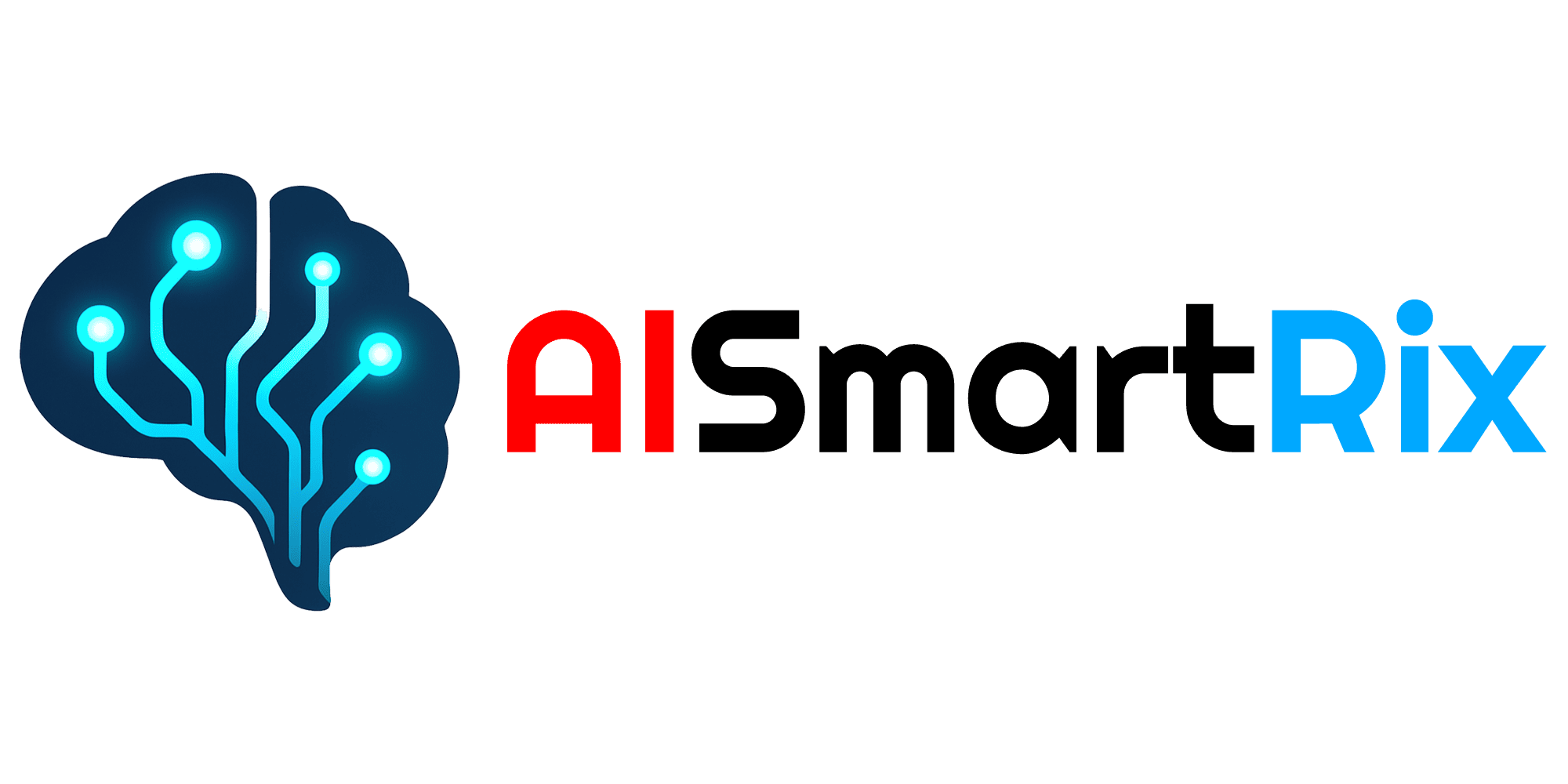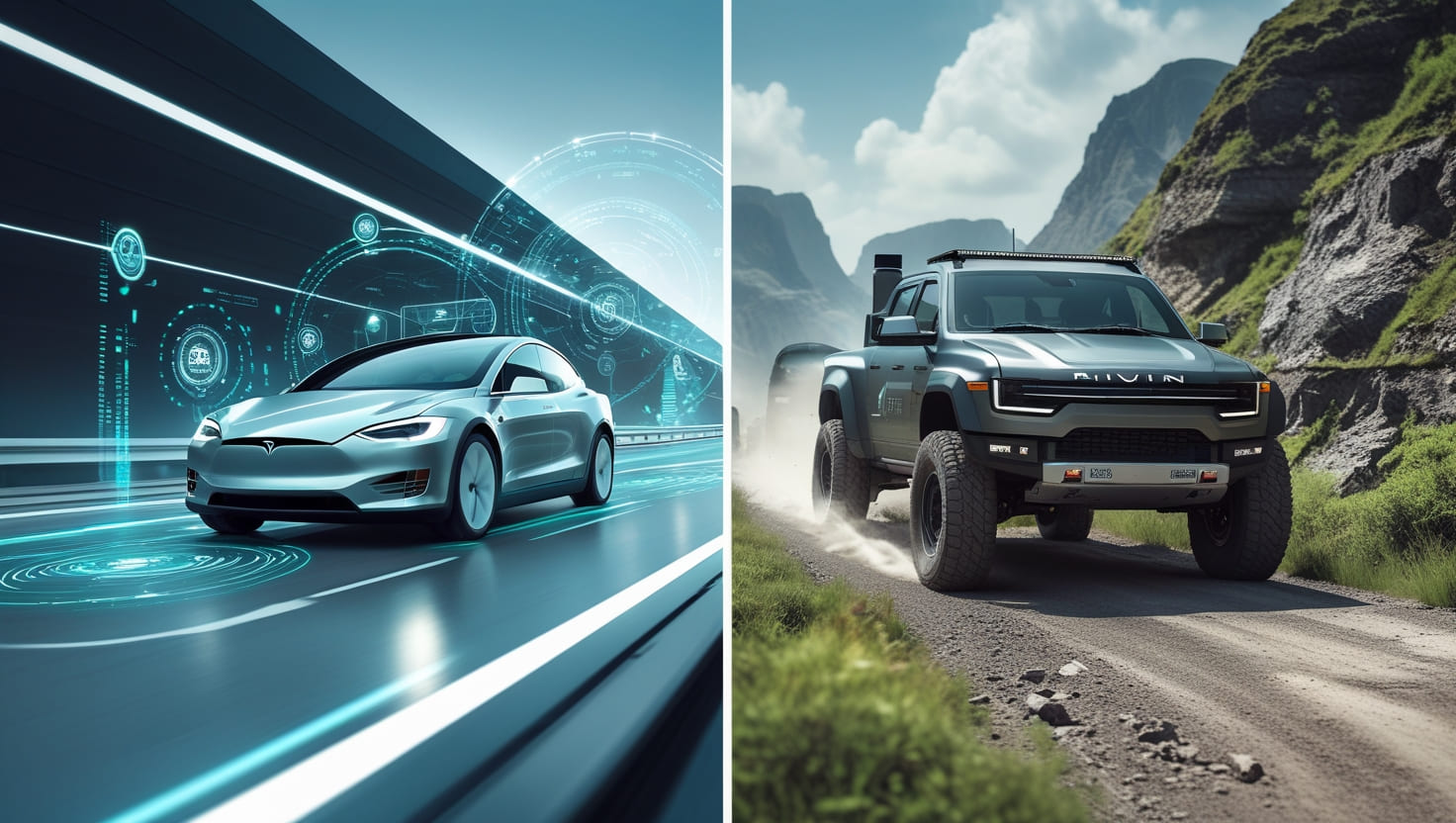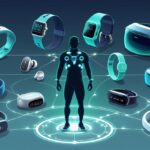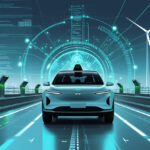In the fast-growing electric vehicle (EV) market, two names have emerged as frontrunners in technological innovation: Tesla and Rivian. While both companies are committed to producing sustainable electric vehicles, their approaches to artificial intelligence (AI) integration set them apart. From autonomous driving capabilities to smart energy management and user-centric features, AI has become a cornerstone of their competitive strategies.
In this comprehensive comparison, we’ll dive deep into how Tesla and Rivian are using AI to revolutionize the EV industry, examining their technologies, innovations, and the future of intelligent mobility.
The Role of AI in the Electric Vehicle Industry
Before we compare Tesla and Rivian directly, it’s important to understand the larger role AI plays in the EV ecosystem. Artificial intelligence is not just about self-driving capabilities — it touches nearly every aspect of modern electric vehicle design and operation, including:
- Autonomous driving and driver assistance
- Predictive maintenance
- Battery management and optimization
- Energy efficiency improvements
- In-car personal assistants
- Real-time route planning and navigation
- Vehicle safety enhancements
- Smart manufacturing processes
As competition intensifies, automakers are racing to leverage AI not only for superior vehicle performance but also to create a seamless, intelligent, and enjoyable driving experience.
Tesla: The AI Pioneer in EV Innovation
Tesla has long positioned itself as a technology-first company, and its AI development is at the core of that identity. Let’s explore Tesla’s key AI-powered innovations:
1. Full Self-Driving (FSD) and Autopilot
Tesla’s Full Self-Driving (FSD) system remains one of the most ambitious AI projects in the automotive industry.
- Neural Network-Based Learning: Tesla trains its AI models using data collected from millions of vehicles on the road. This extensive dataset allows its neural networks to continuously improve their understanding of complex driving scenarios.
- Computer Vision: Unlike many competitors relying on LiDAR, Tesla’s system uses a vision-based approach with cameras, radar, and ultrasonic sensors.
- Dojo Supercomputer: Tesla developed its own high-powered supercomputer, Dojo, to accelerate AI training, processing massive amounts of real-world driving data.
Key Benefits:
- Advanced lane keeping and automatic lane changes.
- Traffic-aware cruise control.
- Automatic parking and summon features.
- Continuous over-the-air (OTA) updates for AI software improvements.
2. AI-Powered Energy Management
Tesla uses AI across its energy products to optimize battery performance and longevity:
- Predictive charging algorithms to reduce grid strain.
- Smart battery temperature regulation for optimal efficiency.
- Adaptive regenerative braking that adjusts based on driving habits.
3. AI Inside the Cabin
Tesla’s in-car experience is also driven by AI:
- Personalized user profiles that adjust settings automatically.
- Advanced voice recognition for natural language commands.
- Cabin cameras that monitor driver attention for safety.
4. AI-Driven Manufacturing
Tesla uses AI in its manufacturing processes to optimize quality control, improve supply chain efficiency, and speed up production.
Rivian: The Emerging AI Challenger
While Rivian entered the EV market more recently, it has quickly established itself as a serious competitor by focusing on rugged electric trucks and SUVs, while also heavily investing in AI technologies.
1. Driver+ System
Rivian’s Driver+ system offers a sophisticated suite of driver assistance features:
- Sensor Fusion: Rivian combines cameras, radar, and ultrasonic sensors to create a robust perception of the vehicle’s surroundings.
- High-Definition Maps: AI-enhanced mapping allows for precise lane positioning and advanced route planning.
- Real-Time Data Processing: Onboard AI continually evaluates driving conditions to assist with lane keeping, adaptive cruise control, and automatic braking.
Key Features:
- Hands-free driving on pre-mapped highways.
- Automatic lane centering and safe following distance maintenance.
- Driver monitoring to ensure attention remains on the road.
2. Adventure-Focused AI Technology
Unlike Tesla’s urban-centric approach, Rivian’s AI excels in off-road and outdoor scenarios:
- Terrain recognition for optimal off-road performance.
- Adaptive suspension systems that adjust to environmental conditions.
- AI-optimized traction control for diverse surfaces like sand, snow, and mud.
3. Smart Energy Management
Rivian employs AI to manage its large battery packs efficiently:
- Real-time energy optimization for extended driving range.
- Intelligent route planning based on terrain and weather conditions.
- Predictive maintenance powered by AI-based diagnostics.
4. In-Car AI Features
Rivian also uses AI to enhance driver comfort and vehicle personalization:
- Customizable driving modes based on user preferences.
- AI-powered cabin climate control and comfort settings.
- Natural language voice commands with evolving machine learning models.
Tesla vs Rivian: AI Innovation Showdown
| Feature | Tesla | Rivian |
|---|---|---|
| Autonomous Driving | Full Self-Driving (FSD) with vision-based neural networks | Driver+ with advanced sensor fusion |
| Data Collection | Millions of real-world driving miles | Growing data from expanding fleet |
| Manufacturing AI | AI-enhanced production lines and supply chains | Early-stage AI integration in manufacturing |
| Energy Management | Smart charging, thermal management, adaptive regen braking | Route-based energy optimization, predictive maintenance |
| Personalization | User profiles, advanced voice AI, cabin cameras | Driving modes, AI-powered climate and terrain control |
| Off-Road Capability | Primarily urban and highway-focused | Strong AI-driven off-road and adventure features |
| OTA Updates | Frequent AI-driven software improvements | Regular software updates with AI enhancements |
The Future of AI in Tesla and Rivian
Tesla’s Future AI Roadmap
- Expansion of Full Self-Driving to true Level 4 or 5 autonomy.
- Greater integration of AI into Tesla Energy products.
- More advanced driver monitoring systems.
- Broader AI deployment in global factory operations.
- AI-powered insurance modeling based on real-time driver data.
Rivian’s Future AI Roadmap
- Expansion of Driver+ for full autonomy in diverse conditions.
- Enhanced off-road autonomous capabilities.
- Deepened AI integration for fleet logistics and delivery services.
- Greater AI personalization for adventure experiences.
- Continued investment in predictive maintenance and diagnostics.
Key Differences in AI Philosophy
- Tesla takes a bold, vertical integration approach, developing nearly all its AI technologies in-house, including hardware like the Dojo supercomputer. Its focus is on urban and highway autonomy with a long-term vision of fully driverless transportation.
- Rivian emphasizes a more cautious, specialized approach, combining AI with adventure, off-road capabilities, and user comfort, while partnering with key suppliers for hardware and focusing on real-world safety and rugged environments.
Both companies are using AI to push boundaries but target slightly different customer experiences.
AI Safety and Ethical Considerations
Both Tesla and Rivian face similar ethical and regulatory challenges as AI continues to drive deeper vehicle automation:
- Ensuring safety during complex driving scenarios.
- Preventing over-reliance on driver-assist features.
- Transparency in AI decision-making.
- Securing data privacy for millions of vehicle users.
- Government regulations on AI-powered driving systems.
Responsible development and ongoing oversight will be critical as these technologies approach full autonomy.
Consumer Experience: Tesla vs Rivian
- Tesla owners often benefit from cutting-edge software updates, early access to new AI features, and a strong ecosystem of integrated products (solar panels, home batteries, and more).
- Rivian owners enjoy a unique combination of rugged adventure readiness, AI-powered off-road assistance, and premium electric utility vehicles tailored for outdoor enthusiasts.
Both offer compelling AI-powered experiences, but serve slightly different lifestyles and driving preferences.
Conclusion
The race between Tesla and Rivian is not simply about building electric vehicles—it’s about who can most effectively leverage artificial intelligence to transform the way we drive, live, and interact with our vehicles. Tesla remains the undisputed leader in autonomous driving AI, while Rivian brings powerful AI innovation to off-road performance, energy management, and adventure-oriented design.
As both companies continue to evolve, their distinct approaches to AI integration will likely shape the broader electric vehicle industry for years to come. Whether you’re drawn to Tesla’s futuristic autonomy or Rivian’s AI-powered adventure experience, one thing is clear: AI is redefining the future of mobility.
Which company’s AI innovations do you find most impressive: Tesla or Rivian? Share your opinion in the comments below!





